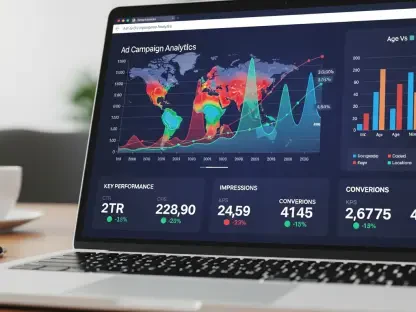Have you ever wondered now, in the age of content and social media marketing, just how did the concept of blogging appeared and evolved? Time perception is a subjective element, nevertheless any summary documentation will reveal the same raw evolutionary parameters: the current form of thematic or personal webpages with periodic entries emerged in the late 1990s –early 2000s and got its name from the truncation of “web” and “log” (Jorn Barger in 1997), or maybe from merging “browser” and “log”.
The role of blogs and blogging reached its mainstream position by 2004, and since then this environment became a major tool for opinion influencing, outreach, presentation, marketing, and ultimately for monetizing a constant online presence, be it amateur-ish or professional.
The digital communities’ concept
An online community comprises a group of people that share common goals and interests that motivate a constant information exchange via web tools; just as real life communities do, these groups have a nodal meeting point and expand into smaller or larger networks where the members know or reference each other’s status, form their reputation and build a certain public persona.
Early digital communities that preceded blogs were Usenet, CopuServe, e-mail lists or various forms of online conversations grouped by “threads”.
However, the neat design of today’s blogs or online publications was powered by free blog-hosting services such as Blogger, Tumblr and WordPress. Although not recommended for professionals, these platforms offered the opportunity for individuals to share their thoughts and styles with the world and also constituted a great testing environment for the way articles or entries reached their audience and stimulated feedback.
The number of existing blogs given by Quora still lists as the most recent reference year 2013, and the actual number is 152 million blogs
Noticing how another number for 2011 is actually higher, the question of whether blogs have reached a plateau is valid: maybe while new blogs appear, older ones become extinct, and the overall figure remains constant. Alternatively, it might just be the case of different algorithms employed for measurements, as Quora suggests. Just to have a complete statistics idea, in 1999 the number of existing blogs was… 23.
Nevertheless, there are voices which argue that blogging is forever gone as it used to be known and that nowadays we are actually reading and interacting with a different kind of digital communities, social media communities that have evolved and changed by integrating commercial aspects and a web of shared and re-posted information. Blogging has turned into a business, with its own standards, awards and power figures.
Going viral determines the choice of materials to be published, just like ratings crush or promote TV programs – and apparently this is an entirely different goal from the initial “collaborative and conversational” nature or early blogging.
An illustrative short material coming from an author who witnessed the evolution of blogging and made his own successful transition to social media speaks of making a career out of blogging, the way one would present a maturing stage.
The link between early blogging and the current digital activities is a continuous one in this vision: social media and modern content did not turn blogs into something different, but rather seized an opportunity and turned it into digital accomplishment, giving many authors the chance to make a profession out of their activity, with funds coming in from their commercial collaborations. Companies and products have added content marketing via blogs and publications to their arsenal, while authors explored this uncharted mixed territory where credibility and their influencer status balanced sponsored content and writing for money.
A step further in the direction of seizing the blog content tool opportunity would be corporate blogging. A Lewis 2007 study pictures how this stimulated content increase, better topics and much more visual elements. Overall quality improved as companies realized how their online presence improved by involving this important outreach tool. The penetration rate of company blogging exponentially increased since then and it is now a common practice for many brands to have such an outlet for their activities, advice, customer relations and product presentations. Blogs host whitepapers, are part of business networking and means of releasing various information to the worldwide mass media – or, in other words, companies and corporations have taken blogs to another level.
Trends in blogging
Another side in the evolution of blogging takes into consideration how various elements and parameters linked to this activity have evolved. For example, a BMAChicago article notes how a few elements changed over the time:
- Post length: posts have increased from an average of 800 words in 2014 to almost 900 words in 2015 while the featured content has become deeper;
- Post frequency: measured by various parameters (daily, weekly, monthly), the frequency seems to have remained the same overall;
- Writing time/post: it only makes sense that with the post length increasing the content writers are spending a bit more time on each post, more exactly an average 2.5 hours/post.
Another realistic analysis of what blogging has become and of the forces that shape this activity contemplates how the bloggers’ dream of having their own audience, their own URL and their own current news compilation has turned into a completely different picture.
The huge Facebook newsfeeds machinery, for example, centralizes worldwide sources and in turn refers its users to certain sites while making a lot of money out of this. There is an entire discussion on how much of the source sites’ traffic is currently being delivered by Facebook, in that some only list a 25 percent, while the real status could be more like 50 percent or even two thirds.
The solution is bluntly summarized by another blogger in its post: “evolve or die” seems to be the only option in the blogging universe. Working with brands and monetizing their content in various ways, today’s bloggers have adapted and acquired skills they maybe never would have thought possible. The author of this article makes it clear that the evolutionary process is ongoing and that social media hasn’t put its full mark on the blogs – more changes are yet to come. Relinquishing even more control over their blogs would apparently improve bloggers’ relationship with brands, but not all of them are prepared to make this move.
Ultimately, blogs form an important marketing environment for businesses. They drive traffic to the relevant company websites, help in converting traffic into leads and in establishing authority and delivering long-term results.
There is one conceptual issue, though. Brands should also grasp the importance of preservation for this particular online environment – there is a point where changes can become too much to bear, by the bloggers and by their audience. Or it might just all be part of evolution, and the public will shape along with the websites, making the entire process even more interesting.









